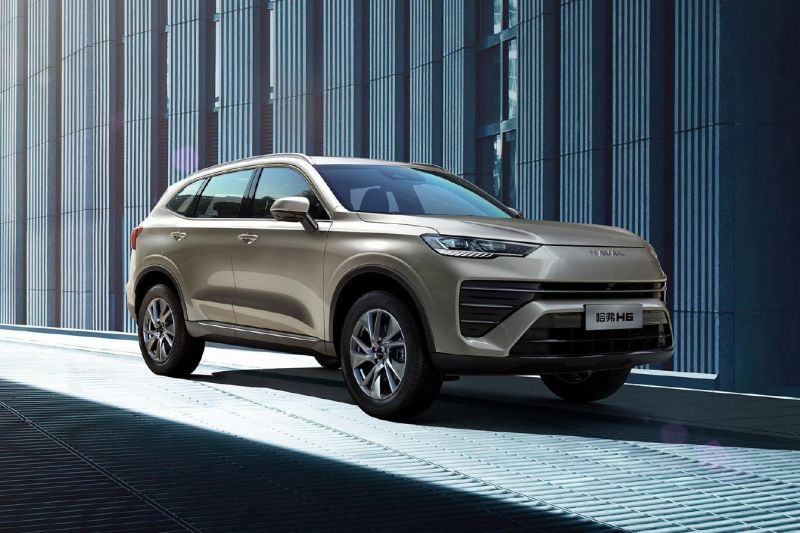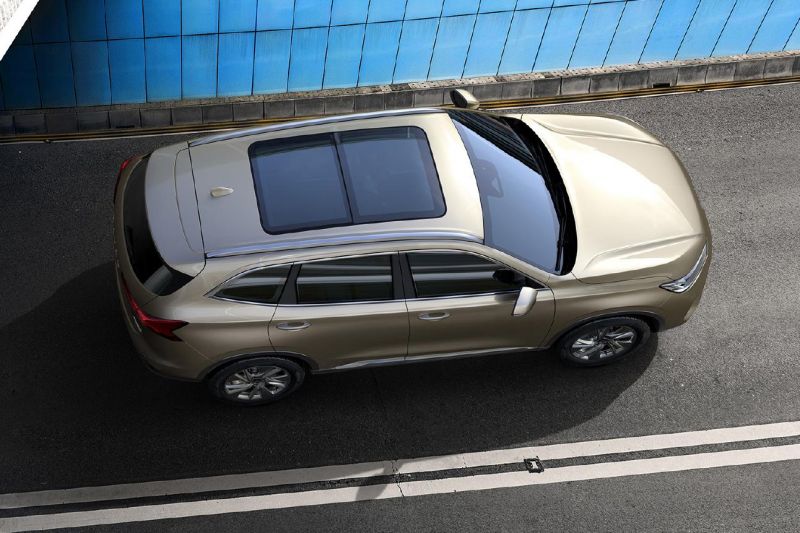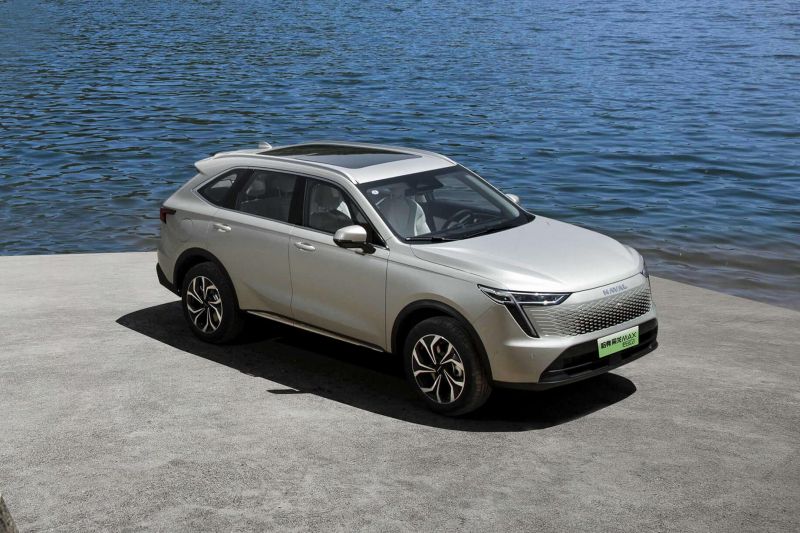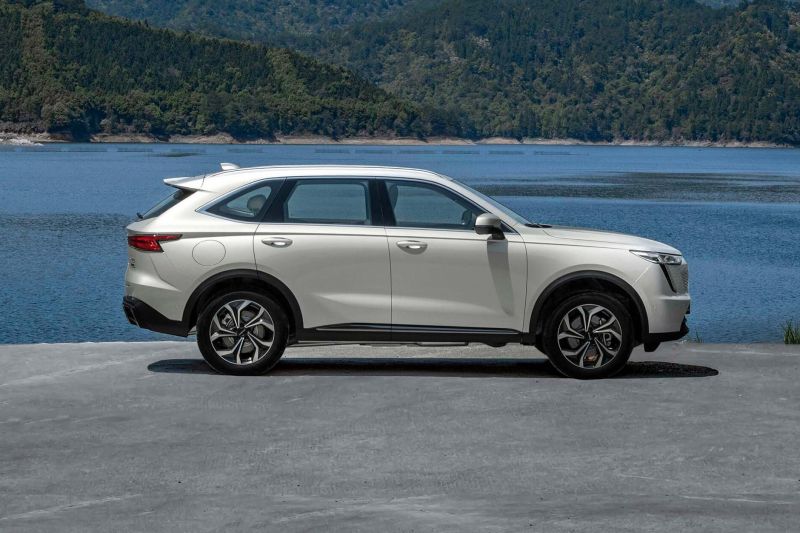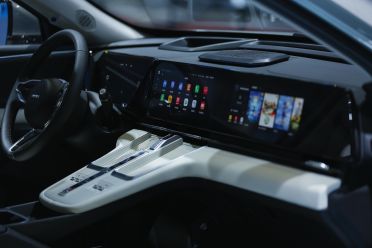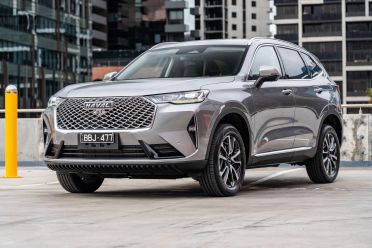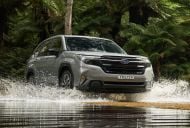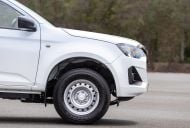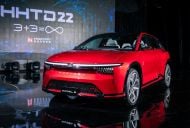GWM has teased a facelifted version of its popular Haval H6 mid-sized SUV in China, but it’s unlikely to come here.
Instead, we’re expecting to see a new mid-sized SUV wearing Haval branding.
Images published on Chinese social media network Weibo show a new front-end design for the H6, ditching the heavily chromed grille of the current petrol model and intricate frameless grille of the hybrid for a completely different look.
The headlights remain a similar shape, but there’s more of a grille-less look with a flush area between the headlights, albeit with a larger opening further down. The front bumper has also been reshaped.
The company says it’s “moving to the next four million”, referring to the four million global sales of the H6 to date. It’s clearly expecting similar popularity for the updated car.
A fixture in the top 10 best-seller list in China, the H6 slid five spots to ninth position in 2022 per Focus2Move. It was overtaken by the first-place BYD Song, with the Tesla Model Y sitting at fourth.
Instead of the freshened H6, CarExpert understands Australia is line to receive the Xiaolong Max, initially codenamed B07 and revealed at this year’s Shanghai motor show.
At its reveal, the company referred to it as its “next-generation medium SUV”, a “strategic model” intended for global markets.
It has thus far only been revealed with plug-in hybrid power, unlike the H6 which comes with petrol, hybrid and (overseas at least) plug-in hybrid powertrains.
It measures 4758mm long, 1895mm wide and 1725mm tall on a 2800mm wheelbase – 103mm longer, 9mm wider and 1mm taller than a GWM Haval H6 on a 62mm longer wheelbase.
That makes it only incrementally smaller than a Hyundai Santa Fe, though there are only two rows of seating.
The new Hi4 plug-in hybrid system in the Xiaolong Max uses a 1.5-litre Atkinson cycle four-cylinder engine mated with a two-speed hybrid transmission, a 70kW/100Nm front electric motor, a 150kW/350Nm rear electric motor and a 20kWh battery.
Total system outputs are 205kW and 585Nm, with a claimed electric range of 83km on the WLTC test cycle.
When the battery runs out, the car will function as a normal hybrid and GWM claims it will be both more energy-efficient and offer a more EV-like drive feel than other plug-in hybrid SUVs.
All-wheel drive is standard, and the Xiaolong Max features MacPherson strut front and multi-link rear suspension.
Models with the Hi4 system will feature GWM’s Intelligent Torque Vectoring Control, promising the distribution of torque between the front and rear axles in milliseconds to improve safety and stability.
There’s a “smart system” that can switch between nine different driving modes based on real-time road conditions.
In city driving, it will switch between pure electric two-wheel drive, series hybrid mode, and first-gear direct drive mode to avoid using the petrol engine. At high speeds, it will use the second-gear direct drive mode to maximise efficiency.
Brake energy recuperation also features in the system.
Inside, there’s a 12.3-inch digital instrument cluster, a 12.3-inch infotainment touchscreen, and an additional 12.3-inch touchscreen for the passenger. A 10-inch head-up display is available.
It’s unclear what the Xiaolong Max would be called in Australia, and when it would arrive.
Sales of the current H6 continue to grow in our market following the launch of a new, third generation in 2021 to replace the 2015-vintage model known in China as the H6 Coupe; we skipped the second-generation model.
To the end of June, sales of the H6 wagon – excluding the H6 GT ‘coupe SUV’ – are up by 70.7 per cent.
GWM has sold 4470 H6s so far this year, outselling the likes of the Volkswagen Tiguan and Renault Koleos. Over the past three months, hybrid variants have accounted for 45 per cent of H6 wagon sales.
MORE: Everything GWM Haval H6





